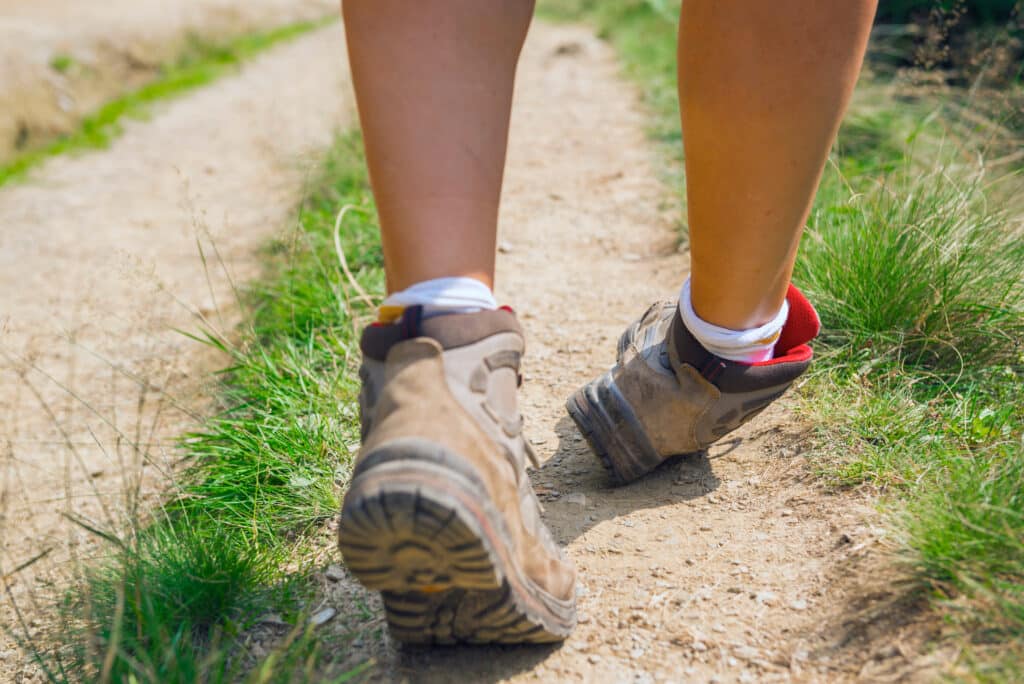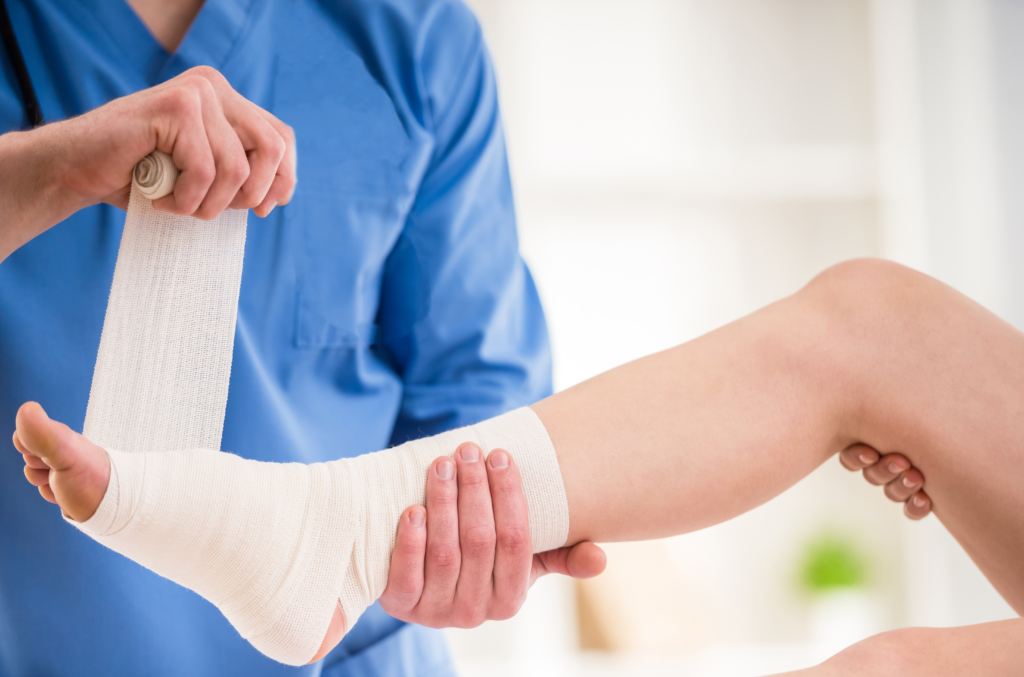Ankle Sprains
Ankle sprains are common among people of all ages. If you play sports, hike on uneven terrain, or work in an environment that requires you to accomplish tasks while standing off the ground (painting on a ladder, for example), you’re at risk of sustaining a sprained ankle.
A sprained ankle occurs when you suddenly roll or twist your ankle in a way that causes the ligaments within the ankle to tear or overstretch.
What are the Symptoms of Ankle Sprains?
Symptoms of ankle sprains include pain when you put weight on your ankle, swelling, bruising, and tenderness. Depending on how badly you sprained your ankle, you may find walking difficult.
What Causes an Ankle Sprain?
You can sprain your ankle while enjoying physical activities that promote an active lifestyle, such as playing basketball in your backyard, dancing in your living room, or practicing a gymnastics routine in the gym. Ankle sprains can also occur while performing everyday activities, such as completing chores around the house.
Most ankle sprains occur if you fall or trip unexpectedly. In this type of scenario, you usually don’t have time to brace yourself and land properly, which makes it possible for the ankle to roll or twist.
How to Treat Ankle Sprains
Minor ankle sprains heal on their own in time, but it is important to get any ankle sprain evaluated to determine the severity of the sprain. This will typically involve X-rays to rule out a fracture, but there are many ways you can start treating your ankle sprain at home. They include:
RICE
The RICE (Rest, Ice, Compression, Elevation) method is designed to relieve pain and swelling. If you’ve sprained your ankle, stop what you’re doing and find a place to rest. Resting prevents you from putting additional stress on your ankle. Apply an ice pack to your ankle; ice reduces pain, swelling, and inflammation.
Compression will involve you wrapping your ankle in a bandage. Don’t make it too tight because you don’t want to limit circulation; the goal is to apply pressure, which will reduce swelling and stabilize your ankle. Last but not least is elevation which involves elevating your injured ankle above your heart so blood flow can be improved and swelling can be reduced.
Pain Medication (Over the Counter or Prescription)
Consider taking an over the counter pain medication, such as aleve or ibuprofen, to help alleviate your pain and reduce swelling. If you prefer to take prescription medications or have allergies to NSAIDs, consult with our doctors.
Physical therapy
Physical therapy can help you recover from your ankle sprain by improving strength and mobility once the inflammation has settled. Your physical therapist will work closely with you to develop a personalized program to ensure you’re not at risk of exacerbating the injury.
Many patients who enroll in a physical therapy program are given a list of stretches and exercises they can perform while at the session as well as in the comfort of their own homes. All of these stretches and exercises will improve the range of motion in your ankle, decrease your ankle pain, and improve your overall balance/coordination.
Surgery
Most people who sprain their ankles do not need surgery. If they do, it’s because the ligaments in the ankle have been torn or stretched to the point where the ankle joint is unstable, or there was an associated injury that requires repair.
When Should You Seek Care For Ankle Sprains?
If you roll your ankle and are unable to bear weight without pain, felt or heard a crack or pop during the incident, feel numbness or tingling in the area, or are simply concerned and would like to know the extent of your injury, a visit is appropriate.
Contact Us for Help With Treatment
At the Foot & Ankle Associates of Greater Pittsburgh, Dr. Peter Harper and Dr. Kristin Harper, help patients of all ages recover from mild to severe ankle sprains. One of our biggest goals will be to ensure that your ankle sprain is treated properly so you can avoid long-lasting instability and/or recurring ankle sprains.
For more information about our practice in Beaver, or to schedule an appointment, please contact us at 724-774-1525 or submit a contact form online.
Contact Us
Office
336 College Avenue, Suite 106, Beaver,
PA , 15009
Monday: 8am – 12pm
Tuesday: 8am – 4:30pm
Wednesday: 8am – 4:30pm
Thursday: 8am – 4:30pm
Friday: 8am – 12pm
Saturday: Closed
Sunday: Closed


